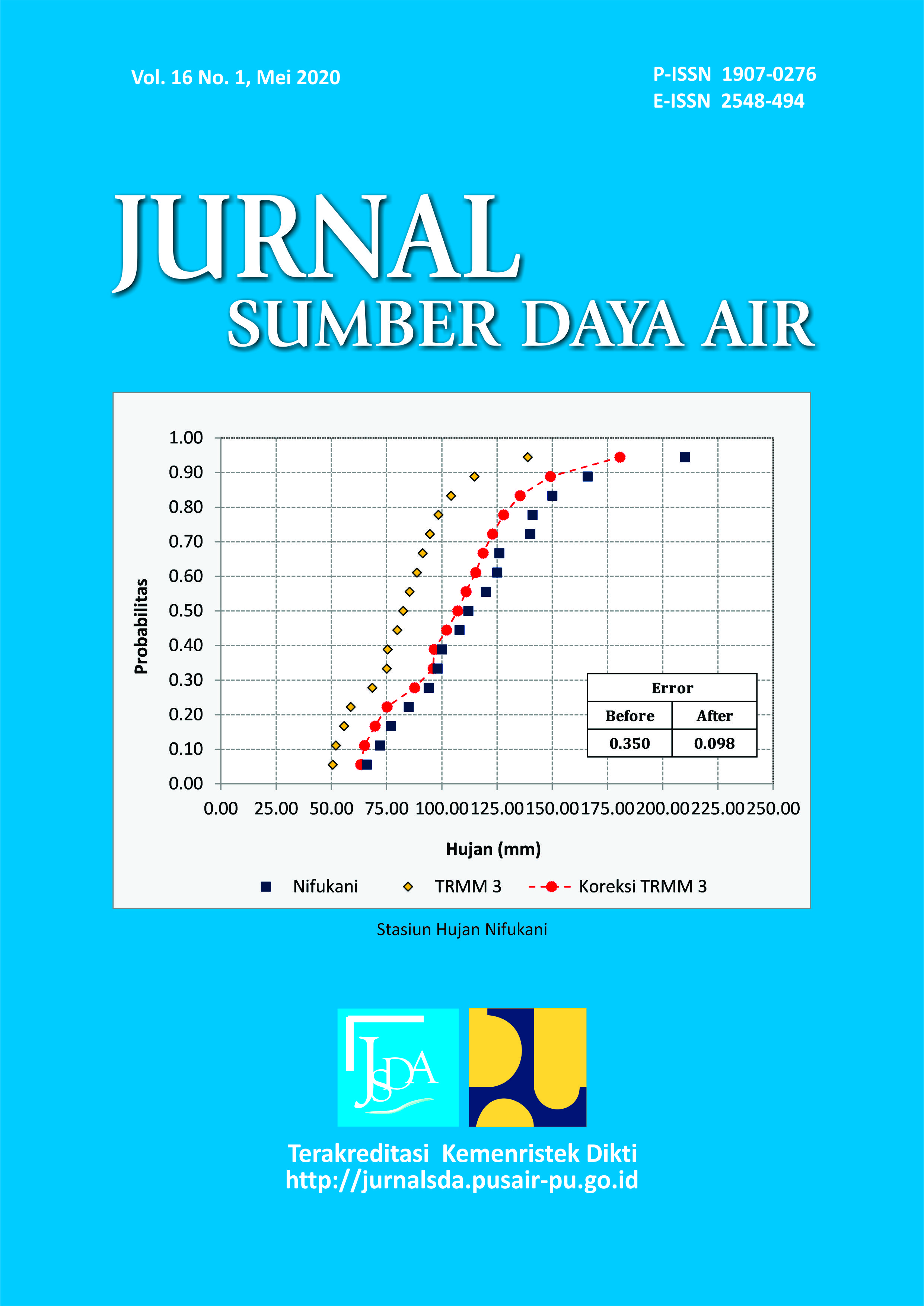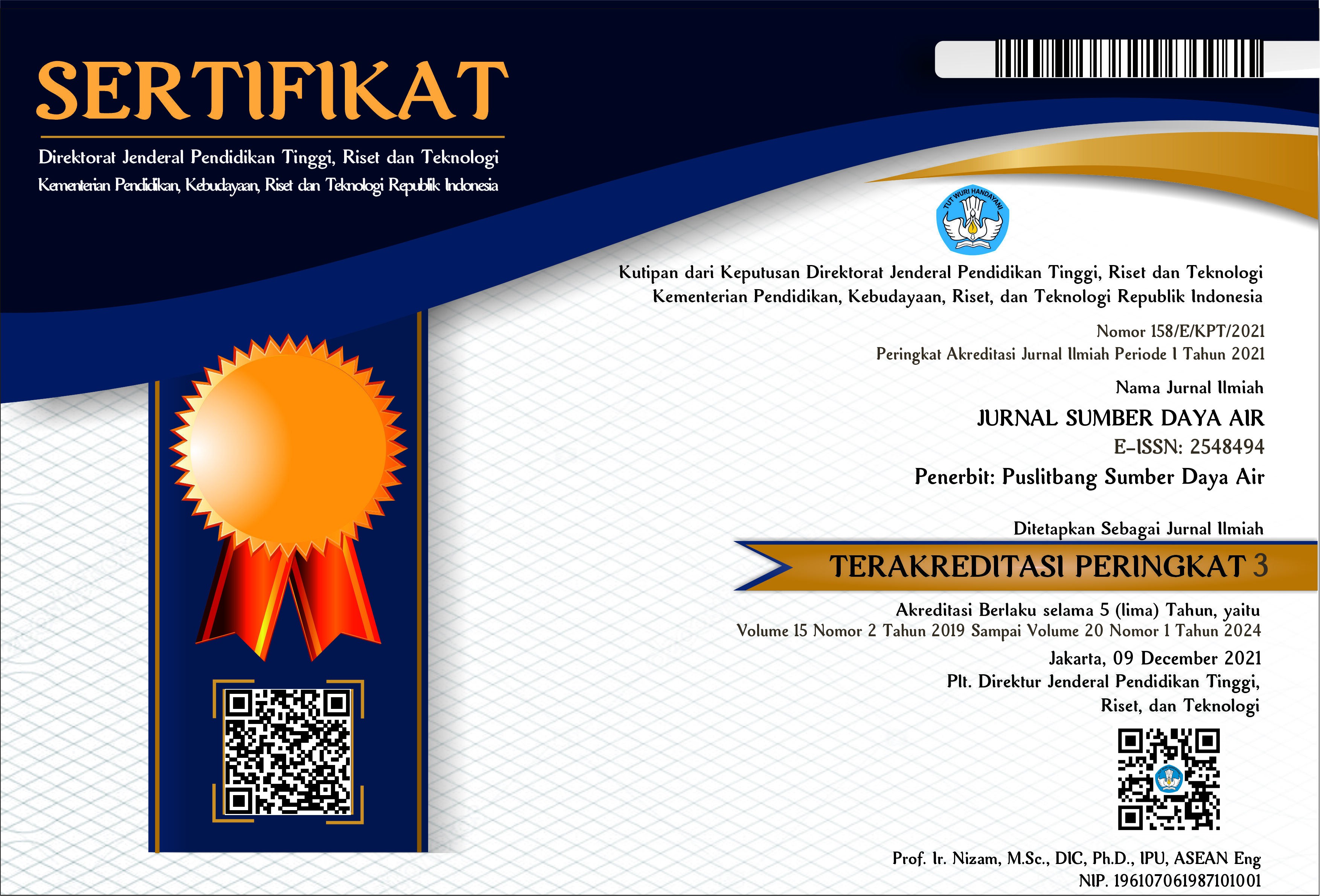Uji Laboratorium Pengaruh Kemiringan Lereng Terhadap Kejadian Longsoran Aliran Debris Pasir Merapi
DOI:
https://doi.org/10.32679/jsda.v16i1.616Abstract
The debris flow that happen on the of Mount Merapi is really hard to be seen, therefore, it is necessary to conduct laboratory-scale simulations to know when debris flows will happen as regard to rainfall intensity and the slope of Mount of Merapi. This research examines the correlation between the slope and the potential for debris flow at 25 mm/h rainfall intensity. This will be a reference for early warning of landslides on Mount of Merapi. This research uses a tool such as flume that sized 3 x 5 x 0,15 m as a model of slope of Mount of Merapi, and artificial rainfall apparatus as the rain simulator. The simulation is conducted using five years rainfall intensity of 25 mm/h in combination of slope i.e. 15, 20, 25, 30 and 35 degrees whereas the material used to represent the sediment is in form of sand taken from Gendol River upstream with 4,75 mm passing mesh sieves. The result of this simulation is the steeper the slope is, the faster the duration for the rain to cause debris flow. This research can be continued with change variation of rainfall intensity to understand the debris flows behavior.
Â
Keywords: Debris flow, Mount of Merapi, laboratory test, rainfall intensity, flume model
Downloads
Published
How to Cite
Issue
Section
License
The Authors submitting a manuscript do so on the understanding that if accepted for publication, copyright of the article shall be assigned to Jurnal Sumber Daya Air and Pusat Penelitian dan Pengembangan Sumber Daya Air as publisher of the journal.Copyright encompasses exclusive rights to reproduce and deliver the article in all form and media, including reprints, photographs, microfilms and any other similar reproductions, as well as translations. The reproduction of any part of this journal, its storage in databases and its transmission by any form or media, such as electronic, electrostatic and mechanical copies, photocopies, recordings, magnetic media, etc. , will be allowed only with a written permission from Jurnal Sumber Daya Air and Pusat Penelitian dan Pengembangan Sumber Daya Air.
Jurnal Sumber Daya Air and Pusat Penelitian dan Pengembangan Sumber Daya Air, the Editors and the Advisory International Editorial Board make every effort to ensure that no wrong or misleading data, opinions or statements be published in the journal.




















